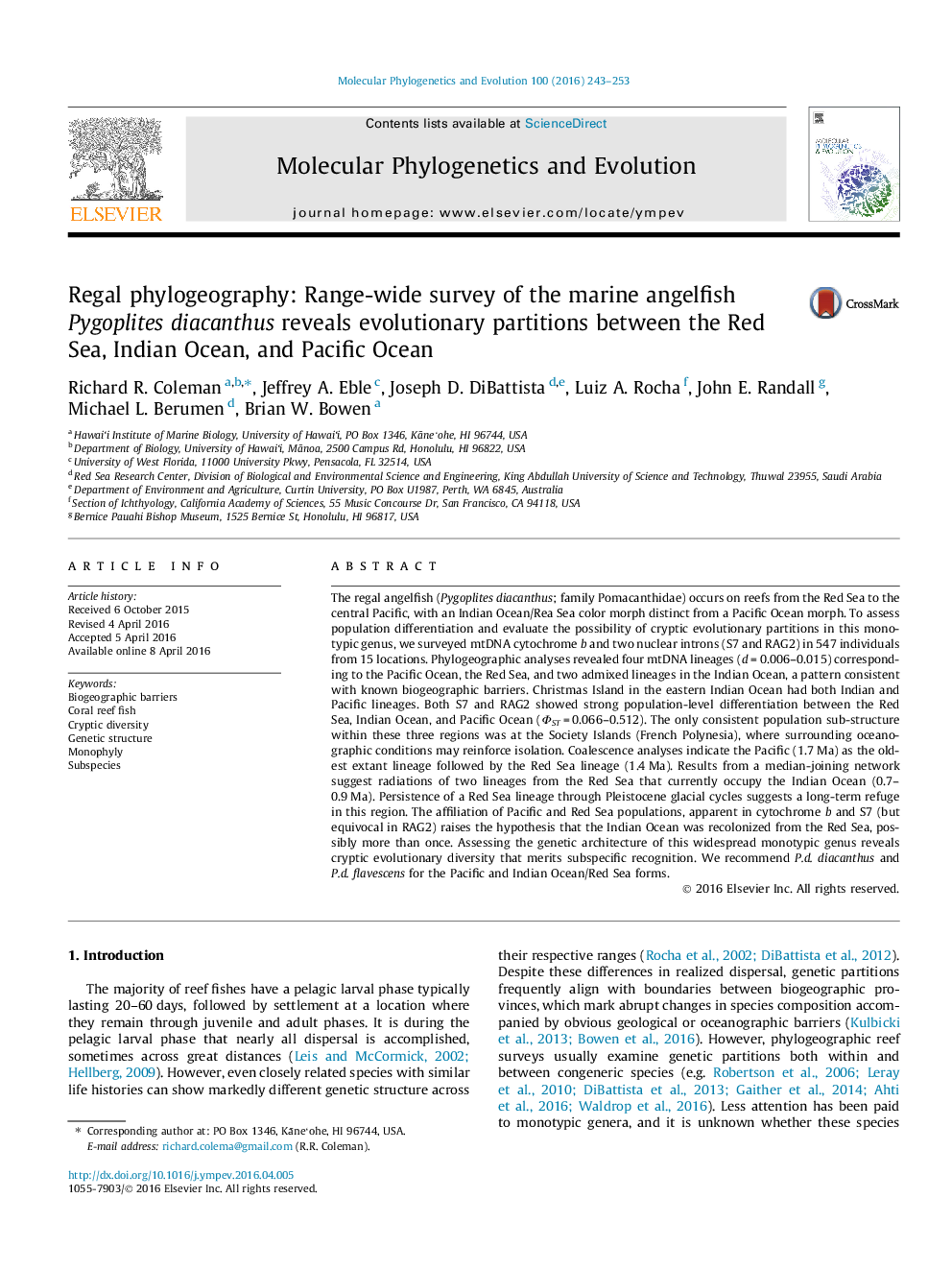| کد مقاله | کد نشریه | سال انتشار | مقاله انگلیسی | نسخه تمام متن |
|---|---|---|---|---|
| 2833666 | 1570797 | 2016 | 11 صفحه PDF | دانلود رایگان |

• Regal angelfish represents a monoypic genus with a deep evolutionary history.
• Oldest coalescence in the Pacific during early Pleistocene (<2 MY).
• Radiations from the Red Sea yield two lineages in the Indian Ocean.
• Divergences between Red Sea, Indian and Pacific Oceans match biogeographic barriers.
• Based on color differences & genetics, evolutionary partitions below species level.
The regal angelfish (Pygoplites diacanthus; family Pomacanthidae) occurs on reefs from the Red Sea to the central Pacific, with an Indian Ocean/Rea Sea color morph distinct from a Pacific Ocean morph. To assess population differentiation and evaluate the possibility of cryptic evolutionary partitions in this monotypic genus, we surveyed mtDNA cytochrome b and two nuclear introns (S7 and RAG2) in 547 individuals from 15 locations. Phylogeographic analyses revealed four mtDNA lineages (d = 0.006–0.015) corresponding to the Pacific Ocean, the Red Sea, and two admixed lineages in the Indian Ocean, a pattern consistent with known biogeographic barriers. Christmas Island in the eastern Indian Ocean had both Indian and Pacific lineages. Both S7 and RAG2 showed strong population-level differentiation between the Red Sea, Indian Ocean, and Pacific Ocean (ΦST = 0.066–0.512). The only consistent population sub-structure within these three regions was at the Society Islands (French Polynesia), where surrounding oceanographic conditions may reinforce isolation. Coalescence analyses indicate the Pacific (1.7 Ma) as the oldest extant lineage followed by the Red Sea lineage (1.4 Ma). Results from a median-joining network suggest radiations of two lineages from the Red Sea that currently occupy the Indian Ocean (0.7–0.9 Ma). Persistence of a Red Sea lineage through Pleistocene glacial cycles suggests a long-term refuge in this region. The affiliation of Pacific and Red Sea populations, apparent in cytochrome b and S7 (but equivocal in RAG2) raises the hypothesis that the Indian Ocean was recolonized from the Red Sea, possibly more than once. Assessing the genetic architecture of this widespread monotypic genus reveals cryptic evolutionary diversity that merits subspecific recognition. We recommend P.d. diacanthus and P.d. flavescens for the Pacific and Indian Ocean/Red Sea forms.
Figure optionsDownload as PowerPoint slide
Journal: Molecular Phylogenetics and Evolution - Volume 100, July 2016, Pages 243–253